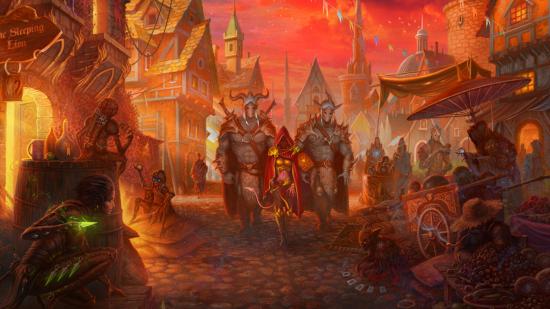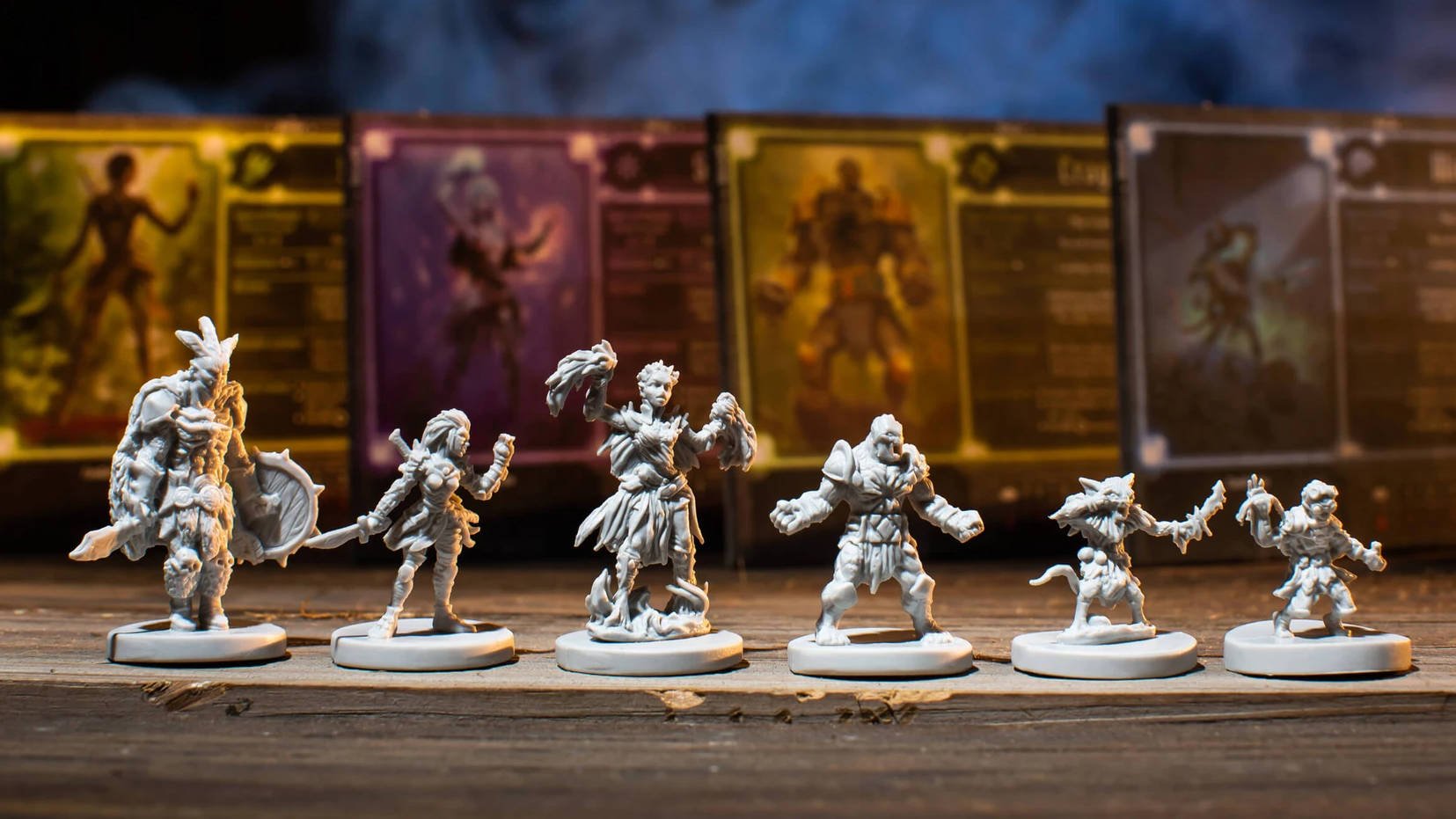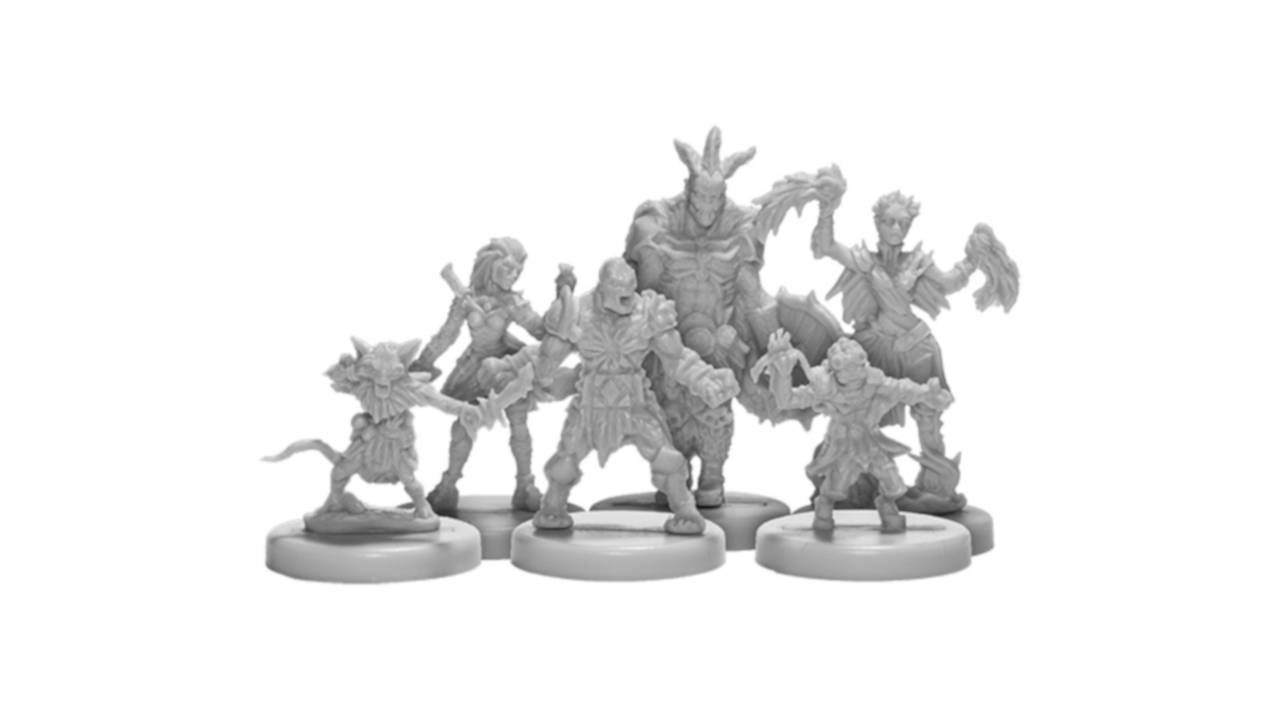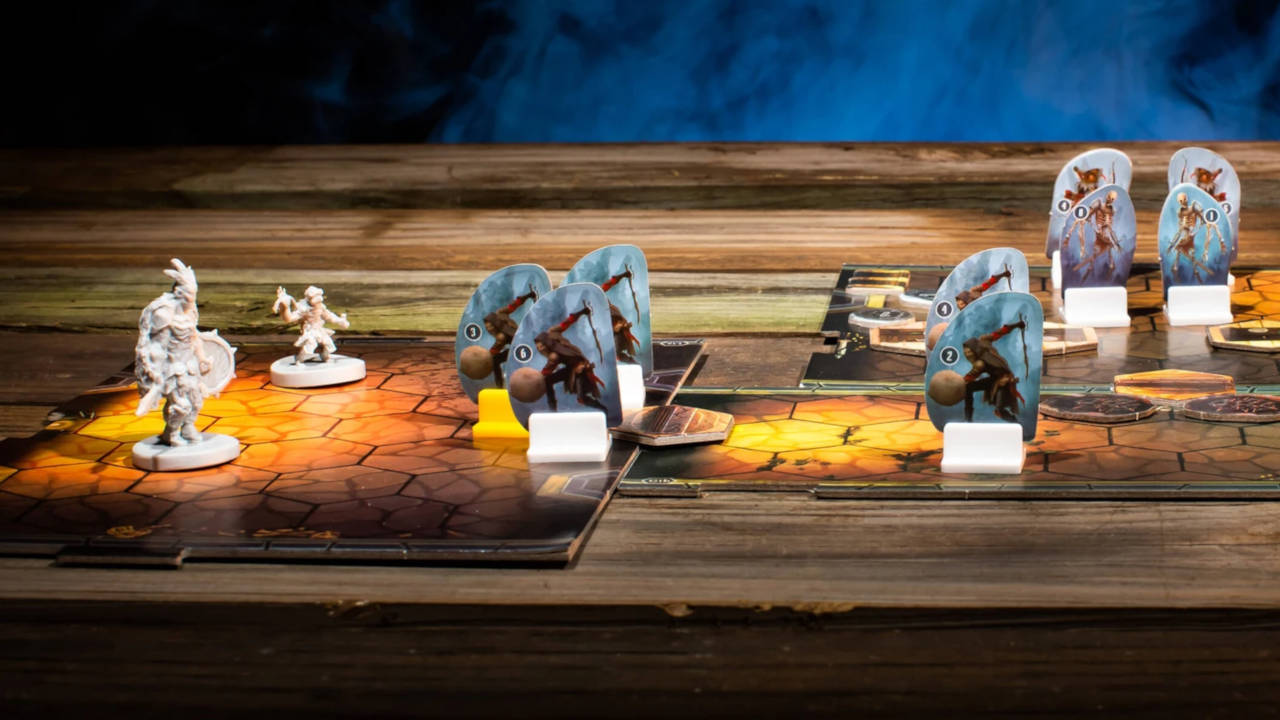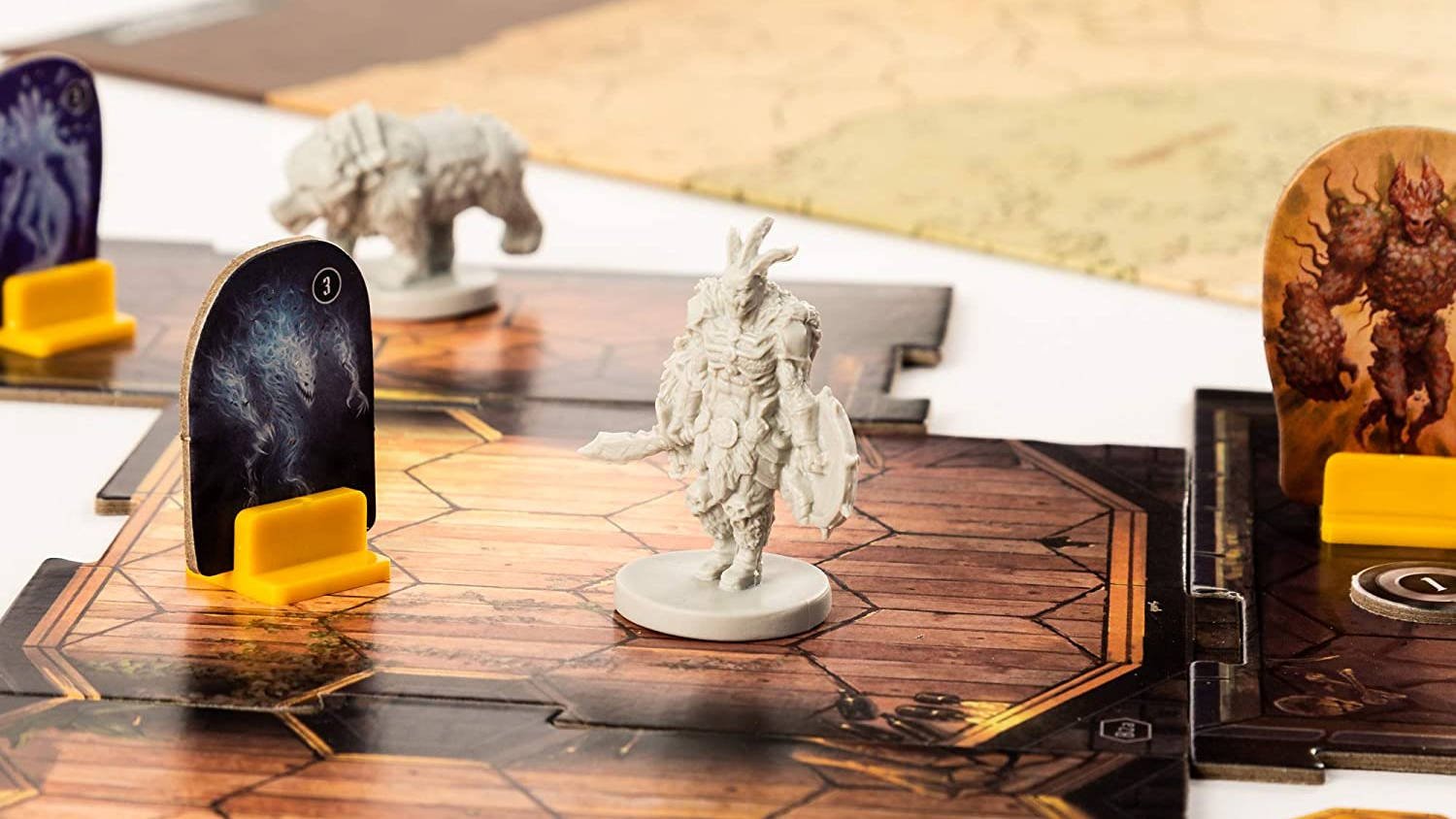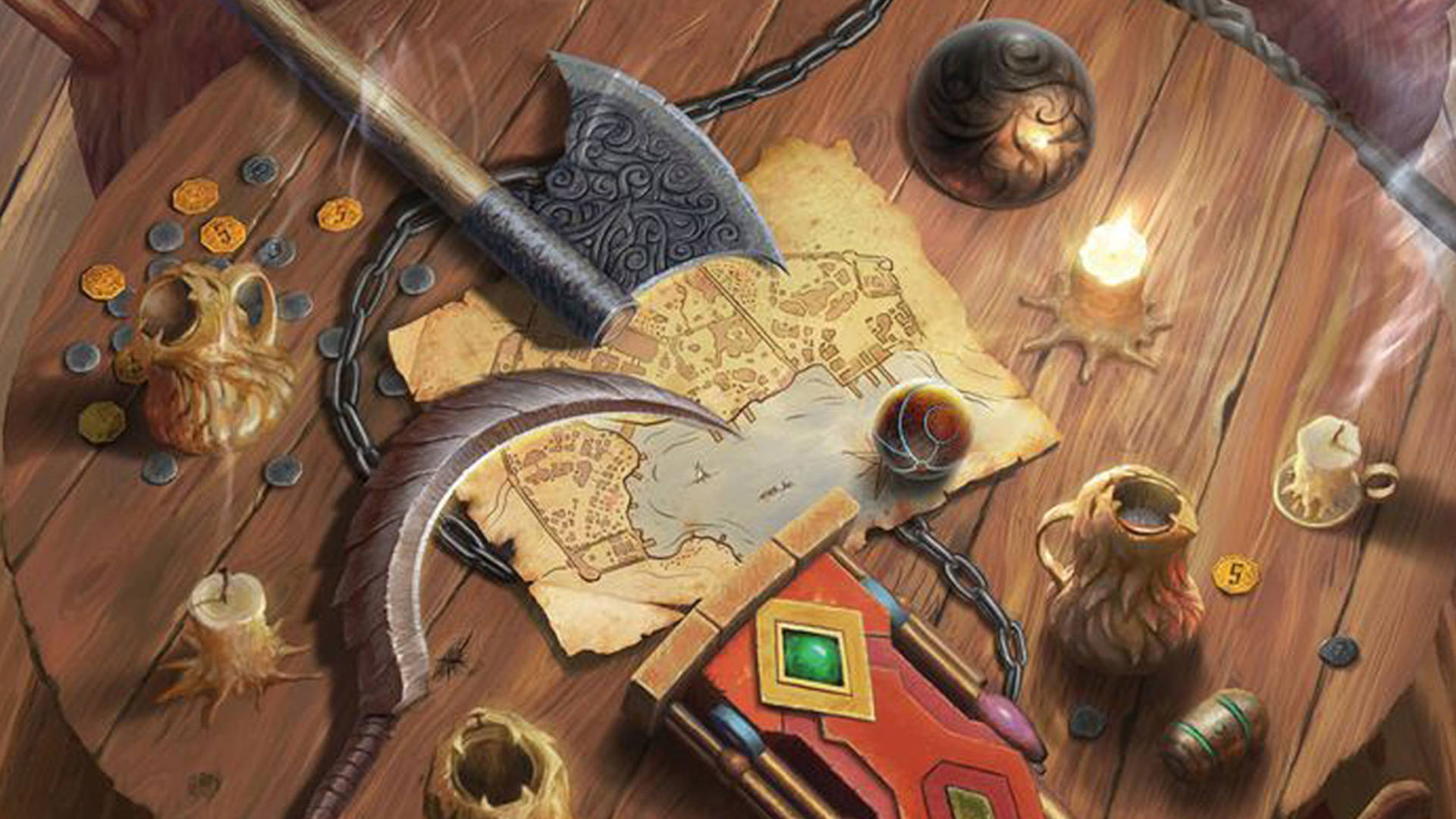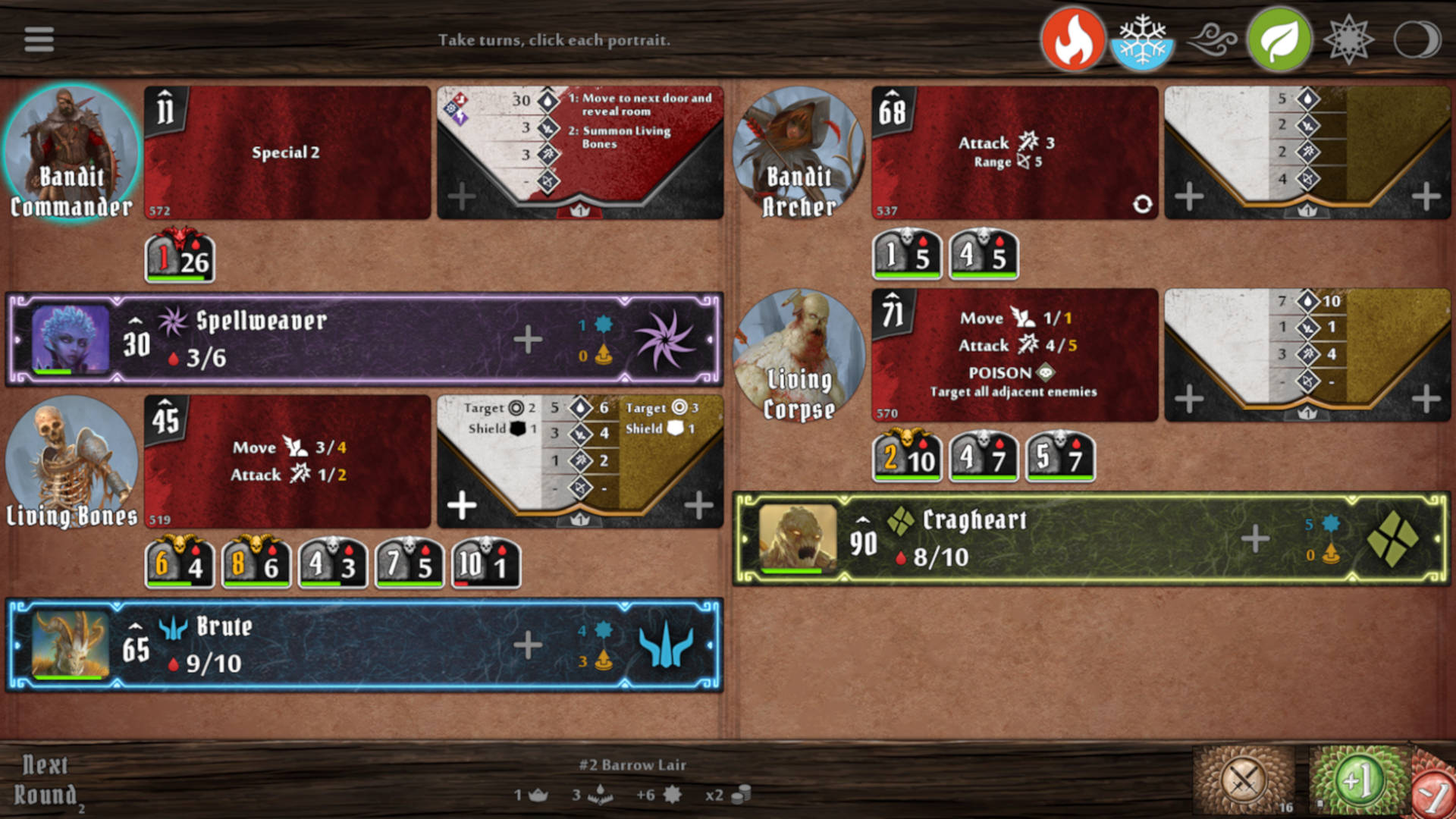Few board games of the last few years have gathered as much acclaim as Gloomhaven. Its Kickstarter was a roaring success that raised the bar for future tabletop proposals, and a dedicated following that continues to hail its refined mechanics, genre-melding gameplay, and sheer ambition has cemented the game as one of the biggest names (and boxes) in the tabletop hobby. But that doesn’t mean it’s easy to start playing.
It’s quite common to have lugged this giant, 10kg monster onto your kitchen table, punched out its reams of cardboard tokens, laid out its horde of miniatures, collated the mountains of cards into discrete decks, and hauled out the enigmatic, white envelopes, before suddenly feeling a little overwhelmed at the scale of the beast before you. Or you may still be tossing up whether the investment in this behemoth box is worth your time (spoilers: it absolutely is).
In either case, this guide is for all those new to the Gloomhaven board game, wanting to know what the game is all about and how to begin playing. We’ll walk you through what it involves, what makes it distinct, and what players do during their dungeon-crawl.
You’ll be slashing your way through corridors of cunning bandits and infernal demons in no time. Before you begin your journey though, be sure to check out our best board games recommendations, as well as other dungeon crawlers we think you’ll enjoy.
Here’s the Gloomhaven board game for beginners:
- What is Gloomhaven?
- Gloomhaven classes – creating your characters
- Gloomhaven scenarios
- Gloomhaven combat
- Gloomhaven campaign
- Gloomhaven helper
What is Gloomhaven?
For any board game of the scope and size of Gloomhaven, it’s useful to understand what the game is fundamentally about, before diving headfirst into the gritty details. Gloomhaven is a cooperative party dungeon-crawler for one to six players, mixing tactical skirmishing with RPG combat in a single, massive box.
You and your adventuring party take the role of ambitious mercenaries, embarking on quests to earn cash rewards and bolster your reputation. Quests are self-contained, combat-focused crawls that have players delve into dark dungeons, fight terrifying foes, and collect loot along the way.
But there’s a greater power at work. The discrete missions are played within a central campaign, and fit inside an overarching storyline that follows the rise of powerful arcane forces and the fate of the city of Gloomhaven. In typical RPG fashion, narrative progression responds to player choices and the world evolves in reaction to your decisions and successes.
Most of your time playing Gloomhaven will be spent trekking through pre-determined ‘scenarios’. These function as dungeons, and will have your party moving tokens across a hex board, choosing attacks, and resolving their effects as you fight your way through corridors of monsters. At other times you’ll be returning to the city to sell wares or rest after wearying battles, dealing with random encounters that befall you along the way.
Central to Gloomhaven is the game’s lack of a game master. Enemy encounters and actions are simulated solely through drawing cards. This means no learned sage can be relied upon to point out your misunderstanding of the rules, or move the game along when your party is overrun by terrible action choices, so players must go in with a firm grasp of how to play the game.
With those preliminaries out of the way, let’s dive into the particulars of the game’s fantastical adventure.
Gloomhaven classes – creating your characters
Before venturing across the sprawling streets of Gloomhaven and slaying your way through bevies of fiends, you’ll need to create a character and join together with other players to form an adventuring party. There’s one central question to answer when creating this character: what class will you play? Although 17 classes feature in the game, new players have six options with a variety of their playstyles:
- Brute – a typical tanky type, sporting generous HP and dealing out heavy melee damage. They’ll want to charge to the frontlines of battle, soaking up enemy hits while bludgeoning all who cross their path.
- Tinkerer – support class, healing wounds and casting penetrating status effects to damage enemies from afar. Using potent elixirs and inventive contraptions from a large hand of ability cards, Tinkerers hang back from the main scrum.
- Spellweaver – a magical savant drawing upon elemental powers to launch devastating attacks on large areas of the dungeon floor. Keep well out of central combat, though, lest your scrawny, robed physique meet the sharp end of a monster’s claw.
- Scoundrel – this nifty rogue specialises in two things: swiftly stabbing enemies to death, and looting gold from the dungeon floor. High movement and invisibility effects allow the Scoundrel to dish out high damage to single enemies before darting from danger, and their avaricious appetites make them a great gold-accumulator for any party.
- Cragheart – an elemental golem that delivers solid melee and ranged attacks. Hurl boulders at distant enemies, break obstacles to clear a line of sight, but be careful your fellow party members aren’t caught in the collateral damage.
- Mindthief – the hardest to pin down, the Mindthief brings variety to any party. Dart into combat to slice enemies and leave them with pernicious status effects, debuff enemies using psychic powers that make them vulnerable to ally attack, or summon a companion to join the fray.
You can find more detail on each of the starter Gloomhaven classes in our dedicated guide.
Despite their enigmatic names, they all operate similarly to the archetypal classes of other fantasy RPGs in the familiar, Dungeons & Dragons mould. Each has specific HP, damage, and movement stats, distinct playstyles that bring complementary advantages and limitations to combat, and are played with particular decks of ability cards that guide their fighting actions (more on that later).
While most of your time playing Gloomhaven will be spent in the throes of battle, your character’s class will radically alter how you play the game, and your enjoyment of it. Pick a class that sounds fun or novel, and will provide sustained interest across hours of playtime.
This is even more important given Gloomhaven’s class progression system. Although your character will gain XP through completing quests and fighting monsters, there’s no copious stat distribution system or feat accumulation.
Levelling up will reward your character with more HP, new ability cards, and perks that refine their fighting capabilities, but nothing to radically overhaul their playstyle. Classes have one central function that is improved, but not altered, throughout the campaign.
Once you’ve found one that takes your fancy, open their class envelope (that’s the slim white box with the relevant class symbol stamped on its side), to grab the class-specific ability cards, tokens, stat sheet, and player board – complete with some tasty flavour text describing the character’s backstory. Also, pop out their miniature to get a good look at your new friend.
Of course, if you can’t choose between the classes and want to jump straight into the action of the game, follow the time-honoured tradition of Gloomhaven class-picking: just grab whichever one has the coolest symbol. Pick a name, write it on your character sheet and you’re all set to explore the wilds of Gloomhaven.
But we said there were 17 playable classes, what happened to the other 11? This is where Gloomhaven’s class system gets interesting. All other classes are gradually unlocked throughout the game, as players complete their ‘personal quests’. Selected during character-creation, these exclusive objectives represent your character’s dream and motivation for pursuing a life of adventuring. Some task you with killing a certain number of enemies, while others will demand you complete a set number of scenarios.
Completing personal quests unlocks new classes that can be added to your adventuring party. Many bring wacky abilities and inventive approaches to combat, offering a totally new way of playing the game. A word of warning, though: don’t go crawling through the internet to get the lowdown on these hidden classes. Let the class sheet surprise you upon opening their envelope, and gape at the strange character in front of you.
Gloomhaven scenarios
Now you’ve gathered a band of adventurers and each selected a class, it’s time to look at how each scenario is played. Gloomhaven starts with your band of work-hungry mercenaries whiling away their days in the intoxicating hubbub of the Sleeping Lion Inn.
Your drinking is soon interrupted by a merchant looking for assistance to retrieve her stolen wares. She’s happy to pay in gold for your trouble – and your empty stomach is happy to accept. This is where the fun begins.
Scenarios are the real meat of the game – where all the fighting, tactical decision-making, and action takes place. Although early scenarios follow a linear progression, parties will soon be faced with branching paths, choosing which dungeon to explore next and down which quest path to go.
Upon embarking on a scenario, read all the details outlined in the ‘scenario book’. For each, an introductory page will outline the narrative behind the quest, show the correct way to set up Gloomhaven’s modular game board, stipulate your objective and any requirements that must be met before starting the scenario, and list the rewards your heroes will receive upon completion.
Rummage through the stacks of cardboard pieces to find the relevant floor tiles to piece the scenario together and any overlay tiles – such as terrain, traps, or treasure – to sit on top of the board. Grab the relevant enemy tiles alongside their statistic cards and get ready for some fighting.
Some scenarios will have you clear a dungeon of enemies; others will task you with retrieving an item; and occasionally you may be required to simply survive or flee for your life.
If your party is successful in completing the scenario’s objective, you’ll earn some tasty rewards, including new items, gold, achievements and, most excitingly, access to more scenarios through which to continue your adventure. If you fail the goal of the mission, or all members of your party collapse from exhaustion, you’ll lose the scenario and have to have another crack.
Gloomhaven combat
That takes us into the operation of each scenario. In typical dungeon-crawling fashion, combat is the central component. But the real charm of Gloomhaven’s turn-based combat system comes from its sprinkling of tactical decision-making, that sees players maximise their effectiveness in combat while working within the limits of the luck of the draw.
When carting out the contents of Gloomhaven’s box, you may have noticed the absence of one tabletop staple – dice. Instead of rolling our familiar many-sided friends, the game uses decks of cards to simulate battle. Before every scenario, each player builds a hand of personal, class-specific ‘ability cards’ to bring into the dungeon. These form the core of the game’s fighting.
Each round, players choose a combination of ability cards to play from their hand, revealing their picks simultaneously. Some cards may have a player deal a melee attack, while others will fire off a ranged attack at a specified distance, or pick up gold for safekeeping. As the game progresses, and your character levels up, more ability cards will be added to your deck, with powerful buffs and condition effects that deal devastating damage.
Enemies, too, are automated, moving by assigned routes and attacking in accordance with predetermined stats. But the ‘attack modifiers’ introduce an element of surprise by randomly altering the value and effectiveness of each attack. Some bump up the attack’s damage, or – if you’re really lucky (or unlucky) – even double the damage. Others add a ‘push’ effect that has your character shove the enemy back while inflicting damage.
Area of effect attacks, poisoning, wounding, immobilising, disarming, and others all crop up, alongside a host of positive conditions, like invisibility or strengthening. These random modifiers drastically shake up combat and will have you shrewdly assessing your upcoming battle plan – planning how best to leverage these effects to dispatch the monster confronting you.
Of course, Gloomhaven wouldn’t earn the RPG label if there weren’t equipable items. Helmets, amulets and an assortment of other fantastical paraphernalia can be attached to your character to provide combat buffs – some permanent, some temporary.
Finally, a spot of combat-roleplaying wisdom: odd though it may seem, it’s worth instilling some vagueness to your team’s decision-making. Although a cooperative game, Gloomhaven works best when players coordinate a general party strategy, but don’t collectively juggle their in-game statistics in order to always make the most ‘efficient’ choice.
Rather, the game recommends players refrain from sharing the numerical details of their actions, the better to immerse themselves in the clunky chaos of a band of hardened adventurers tearing their way through claustrophobic corridors of monsters.
Gloomhaven campaign
Outside the individual scenarios, Gloomhaven functions as a persistent world. As you adventure across the land, the consequences of your actions and the scenarios you have completed will progress the game’s overarching story, drawing you closer to the climactic battle that awaits.
But the world around you will also evolve. Your party’s deeds will alter their reputation. Gaining positive fame will reduce the cost of items sold to players, while infamy will inflate prices. Specific reputation levels, both good and bad, will unlock new content that’ll become open to you within the campaign as you’re playing it. Some events will increase Gloomhaven’s ‘prosperity’ as a city, again unlocking rewards and new items for your characters to purchase back in town.
The crown jewel of this persistent experience, however, derives from characters’ personal quests. Remember, these are distributed during a character’s creation and represent their motivation for adventuring. When a character’s personal quest is complete, they must ‘retire’, throwing down their weapons, glad to never again have to set foot in a creature-filled dungeon. This is the end of the road for them, and the character is removed from the game.
But completing personal quests is not simply an end, but a gateway to new possibilities. The character classes unlocked through completing personal quests can be used to create a new character and rejoin the party afresh.
It’s expected that players will retire multiple characters throughout a full campaign, allowing them to try out new classes with original playstyles midway through. Each class brings a nice twist on the starting six classes, and ensures copious combat variety throughout a single campaign.
Players that retire a character will also gain rewards, including an extra perk to apply to all their future characters, and increase the prosperity of their city.
For many players, the unlockable classes represent the real objective of the game. Sure, progressing through the game’s narrative gives some engaging context to your dungeon-crawling, but the thrill of opening a shiny new envelope and discovering whatever secrets await inside – now that’s incomparable.
Gloomhaven helper
Once upon a time, there was an official companion app is designed to track all the nitty-gritty details of a Gloomhaven scenario, taking admin tasks out of players’ hands so they could focus on the action and storytelling of the game.
However, it was not to last – and the Gloomhaven Helper app was removed from app stores on May 12, 2022. Those who already own the app can still use it, but new players looking to streamline their first Gloomhaven board game experience will need to travel that path without a digital companion.
This has been a preparatory wander through the basic components of playing Gloomhaven, preparing you for a hardy adventure of quest-chasing, monster-slaying, class-completing fantasy action. It’s worth noting that Gloomhaven is a colossal beast of a game, with a dense rulebook and lots of minor, easily-forgotten quirks.
If you want to have the best go of it, consume the rulebook in its entirety before playing and have it to hand when making your first steps into the game’s eponymously dimly-lit world. Gloomhaven can be hard to get your head around – but its as-yet-unmatched combo of tactile board game mechanics and deep RPG-style world-building makes it one of the stand-out titles in modern tabletop gaming, and, if you have the inclination, it’s well worth diving in.
